Peanut/Groundnut chutney
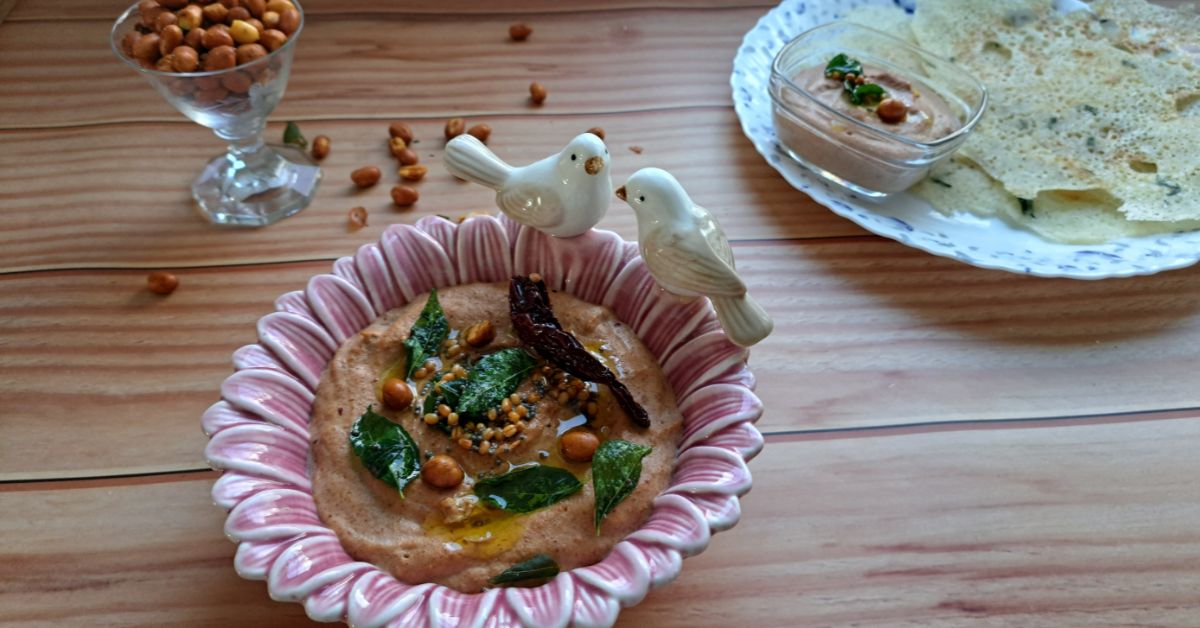
Peanut/Groundnut chutney is a flavourful sauce made with roasted peanuts as the primary ingredient. Rawa dosa, idli, vada, or rice are served with it in South Indian cuisine. The nutty richness of the roasted peanuts, combined with the spiciness of red chillies, the tanginess of tamarind, and the aromatic tadka (tempering) of mustard seeds and curry leaves, created a delicious flavour that paired with the softness of idlis or the crispiness of dosas.
Over time, peanut/groundnut chutney has evolved with various regional and personal interpretations, but one constant remains – the importance of tamarind in its preparation. With its sweet and tangy flavour, tamarind plays a crucial role in balancing the richness of peanuts. The process of incorporating tamarind in peanut/groundnut chutney involves either using tamarind pulp or tamarind paste. Soak small, marble-sized tamarind balls in warm water to extract their juice. This process creates a tart liquid used in chutney. Use tamarind paste for convenience to ensure consistent and well-distributed tanginess in the dish.
The combination of peanuts and tamarind in the chutney creates a harmonious blend of flavours. The nuttiness from the roasted peanuts, coupled with the sweet and tangy notes from tamarind, results in a delicious chutney.
Try our Curry Leaves Chutney for a fresh and aromatic alternative!


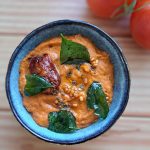
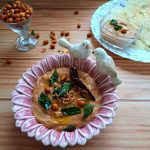
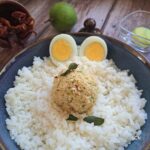
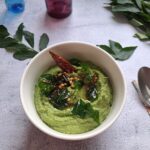

Peanut/Groundnut chutney
Ingredients
1 cup = 250ml
- 1 cup peanut
- 2 tbsp oil
- ½ tsp cumin
- 3 cloves of garlic
- 2 kashmiri red chilly adjust according to spice preference
- A pinch of asafoetida/ hing
- 1 large onion roughly chopped
- Tamarind pulp or tamarind paste about a small lemon-sized ball
- Salt
- Water as needed
Tempering
- 2 tbsp oil
- 1 tsp urad dal
- ½ tsp mustard
- 1 red chilly
- A few curry leaves
Instructions
- Dry roast the peanuts in a pan on medium to low heat until they become golden brown and allow them to cool.
- If you’re using tamarind pulp, soak it in warm water for a few minutes and extract the juice. Alternatively, you can use tamarind paste. You can also skip soaking tamarind and add it directly to the pan while sauteeing onions if it is clean.
- Heat oil in a pan, add cumin, garlic, red chilli and saute for a minute. Add the roughly chopped onion, hing and salt. Saute them until the onions turn translucent. Allow it to cool before grinding.
- In a blender or food processor, add the roasted peanuts and blend until you get a coarse powder. Now add the sauteed onion mixture, along with tamarind (if soaking) or tamarind paste. Blend the mixture once more until you get a smooth and well-combined chutney. If needed, add water to adjust the consistency of the chutney.
Tempering (Tadka)
- Heat oil in a pan. Add urad dal, once it turns light brown add the mustard seeds, dried red chillies, and curry leaves. Let them splutter and release their aroma.
- Pour the tempering over the blended peanut mixture.
- It can be served as a side dish with dosa, idli, vada, or rice.
Notes
Frequently Asked Questions
You can use either roasted or raw peanuts. Roasted peanuts add a richer, nuttier flavour, while raw peanuts provide a milder taste. If using raw peanuts, you may want to dry roast them for enhanced flavour.
Yes, peanut chutney can be made without coconut. The peanuts provide enough creaminess and texture, making it delicious on its own.
You can store peanut chutney in an airtight container in the refrigerator for up to 2-3 days. If you want it to last longer, avoid adding ingredients like onions, as they reduce shelf life.
To adjust the consistency, simply add water as needed. For a thicker chutney, use less water; for a thinner chutney, add more water while blending.
Yes, you can increase the spiciness by adding more green chillies, red chillies, or red chilli powder, depending on your preference.
Peanut chutney pairs well with dosa, idli, uttapam, vada, and even parathas. It’s also a great dip for snacks like pakoras or samosas.
Yes, peanut chutney can be frozen for up to a month. Store it in small, freezer-safe containers. Thaw and mix it well before serving, as the consistency may change slightly.
Yes, you can omit garlic if you prefer a garlic-free version. It will still be flavourful with the other ingredients.
If the chutney is too thick, add a little warm water and blend it again to achieve your desired consistency.
Add a bit of sugar or jaggery to balance excess tanginess and blend it again. This will mellow out the sour taste.
Share Your Creations and Connect with Me on Social Media!
Have you tried this recipe? Don’t forget to tag me with your pictures on Instagram – I love to see your creations! 💕 Also, be sure to comment and rate below! Follow me on social media:
1 thought on “Peanut/Groundnut chutney”